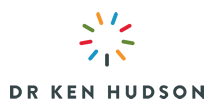Linear or straight-line thinking worked beautifully when the world seemed to react in a linear way.
If sales were behind it was simply a matter (in most cases) of more resources. Increase the advertising, decrease the price or say expand the sales force.
Cause and effect.
A 20% increase in resources more often than not resulted in a 20% increase in sales. A linear relationship was maintained.
The big players remained big, there were distinct categories and industries and everyone fought for a few market share points at the margin.
But no more.
Everything has been turned on its head.
Is Amazon in the book or logistics or retail or ecommerce or cloud or payments business. Or is it in all of these? Or is the question what business are you in no longer valid?
Critical thinking likes neat categories.
A or Not A.
You are a bank or a non-bank (for example).
These simple, clear boundaries don’t reflect the overlapping industries and categories of today (and tomorrow).
It’s messy, ambiguous, volatile and chaotic and only going to become more so in the future.
So why rely on critical thinking only when it cannot cope with this reality?
We need to change our thinking to survive and prosper.
Particularly when the future will be dominated by AI.
AI including Machine Learning will handle all rote and routine work.
In other-words, all simple, linear problems so to continue to make an impact you simply have to learn multiple, non-linear modes of thinking.
In addition, many technologies, social movements and innovations have not followed the old, linear rules.
Think of Facebook, Mobile Phones, Instagram, TikTok to name a few – their growth is exponential.
Let’s consider also the case of Greta Thunberg.
A teenage girl has come out of seemingly nowhere to become one of the future generation’s spokespersons on Climate Change.
In this unexpected and unpredictable journey she is lecturing the business and political elite about the urgent need to reduce emissions.
Her impact is non-linear and exponential.
The lesson?
– Critical Thinking favours the status-quo.
– Critical thinking is used by the established order and incumbents.
– To adapt and succeed you need to develop to become both a critical and creative thinker.
For example, imagine a people moving business without owning a single car.
Uber for example, disrupted all the rules of the previous taxi business.
Assumptions and conventions that we took for granted were turned on their head.
The founders of Uber relied on imagination, intuition and critical thinking in equal measure to create their new business model.
To succeed you need to develop and use (in equal measure) both your critica and creative thinking skills.

